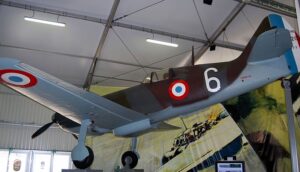Time Period: World War II
Country of Origin: Russia / USSR
Type: Biplane, General Purpose, Transporter Aircraft
Manufacturer: Antonov Design Bureau
Antonov An-2 Aircraft Overview
The Antonov An-2, also known by its NATO reporting name “Colt,” is a legendary Soviet-era utility aircraft renowned for its robustness, versatility, and longevity. Designed by Oleg Antonov in the late 1940s, the An-2 made its maiden flight in 1947 and quickly gained recognition as one of the most successful biplanes ever produced.
With its distinctive biplane configuration, featuring a high-wing design and large fabric-covered wings, the An-2 embodies a classic and enduring aircraft design. Its rugged construction, primarily of metal and fabric, contributes to its durability and ability to operate in a wide range of environments, from rugged airstrips to remote and inhospitable regions.
The An-2’s versatility is perhaps its most notable attribute. Originally conceived as a utility transport aircraft, it quickly found applications in a myriad of roles, including passenger and cargo transport, agricultural spraying, aerial firefighting, parachute dropping, and even as a light bomber and reconnaissance aircraft. Its ability to operate from unprepared airstrips and short runways further enhances its utility, making it indispensable in regions with limited infrastructure.
Powered by a single radial engine, the An-2 may not be the fastest aircraft in the sky, but its reliability and efficiency have earned it a reputation as a workhorse. Its spacious cabin can accommodate up to 12 passengers or various cargo configurations, making it a popular choice for transporting people and goods in remote and inaccessible areas.
Despite its age, the An-2 remains in service in many countries around the world, a testament to its enduring design and practicality. Its iconic silhouette and unmistakable sound evoke a sense of nostalgia for aviation enthusiasts, while its continued presence in the skies serves as a reminder of its enduring legacy as one of the most versatile and beloved aircraft ever built.
Antonov An-2 Specifications
- Crew: 1–2
- Capacity: 12 passengers / 2,140 kg (4,718 lb)
- Length: 12.4 m (40 ft 8 in)
- Upper wingspan: 18.2 m (59 ft 9 in)
- Lower wingspan: 14.2 m (46 ft 7 in)
- Height: 4.1 m (13 ft 5 in)
- Wing area: 71.52 m2 (769.8 sq ft)
- Airfoil: TsAGI R-11 (14%)
- Empty weight: 3,300 kg (7,275 lb)
- Gross weight: 5,440 kg (11,993 lb)
- Fuel capacity: 1,200 L (320 US gal; 260 imp gal)
- Powerplant: 1 × Shvetsov ASh-62IR 9-cylinder air-cooled supercharged radial piston engine, 750 kW (1,010 hp)
- Propellers: 4-bladed constant-speed propeller
Antonov An-2 Performance
- Maximum speed: 258 km/h (160 mph, 139 kn)
- Cruise speed: 190 km/h (120 mph, 100 kn)
- Stall speed: 50 km/h (31 mph, 27 kn) circa
- Range: 845 km (525 mi, 456 nmi)
- Service ceiling: 4,500 m (14,800 ft)
- Rate of climb: 3.5 m/s (690 ft/min)
- Power/mass: 0.136 kW/kg (0.083 hp/lb)
- Fuel consumption: 185–200 L/h (49–53 gal/h; 41–44 imp gal/h)










